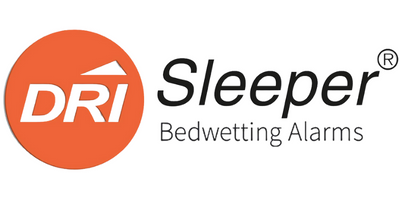This product has meet our expectations, currently night training our daughter, and seeing results of being dry at night time.
My 6 year old had never had a dry night. She is a heavy sleeper and would sleep through even when she was wet.
We started with the bedwetting alarm about 5 weeks ago. The first 2 weeks the alarm would go off 2 times per night most nights, and she would not wake up at all. The alarm is pretty loud so I would hear it and wake her up every time. By the third week she was starting to wake up when the alarm would go off, and by the 4th week she had a dry night! She has just done 6 dry nights in a row now, and is even waking up during the night when she needs to go to the toilet.
The bedwetting alarm has been just what we needed! Highly recommend.
We have been using it for a few weeks and there is improvement. We have to get up when alarm goes off, as Mr 9 is too frightened by the noise to turn it off. But then we can gently take him to the toilet. It has only gone off a handful of times though - down from almost nightly accidents. Sometimes goes off when he puts in the undies at bedtime weirdly.
Recommend the product. Very easy to use. We use the double undie technique.
Thanks for your recommendation of the product. Did you try the priming technique? This may help get him used to the sound and respond on his own. Try getting him to wrap the sensor in a piece of toilet paper before inserting between the two pairs of underwear - this should prevent any accidental triggering. Also, get him to avoid placing his fingers on the black sensing strips side of the sensor when inserting.
We’ve been using the alarm for a few months now. It’s very effective and is definitely making a difference
Me and my son med a big progress so fare. From not being able to wake up to waking up himself or on the first drop with an alarm and go with me on the toilet. Not completely without the alarm yet but it’s slowly coming. In fact I expected the journey to be much longer.
Congratulations on the progress. Please reach out if you want any guidance. Good luck!
We have tried alarms with wires and had no success. But we were excited to try this one as it seemed a lot easier and more comfortable for my daughter.
We had success very early. We did combine it with the wafer tablets from the paediatrician to begin with.
I don’t know if it was a mind over matter thing but within just a few weeks my daughter was waking up dry. We are very happy with this product and it was worth the money for sure.
Like everyone thinking of buying this - I was sceptical! My 7 year old daughter had never had a dry night in her life. We started using this and for 2 weeks saw no improvement. She woke up easily once a night when the alarm went off (different times each night, so no useful pattern) and we thought - its been 2 weeks - shouldn't we see some change? And then 'bingo' - we're only 8 dry nights in - but that seems huge! None of us can quite believe it. Just crossing everything that she can keep going with it! Almost nervous to write this review, in case Im tempting fate!!
I am amazed at how well this worked! My son is 6 and was still wearing nappies overnight, sometimes even leaking through because he would wee at least 3 times. We tried absolutely EVERYTHING, but nothing worked. He was producing a lot of urine overnight AND was a deep sleeper who would not wake when his bladder was full or even if he had soaked the bed. The alarm is easy and small, we just taped it onto the outside of his undies, and worked like magic. Within 10 days he was getting through the whole night with the alarm only going off in the morning. And by the middle of week 2 he was fully dry overnight with no alarm sounds and he was waking himself to go. I am so so happy with this device, best money spent. My son is so happy with himself too.
I'm so glad I bought this when I did. My 3 year old doesn't use diapers during the day, and she hasn't wet the bed for four nights in a row. Since day 9 of using the sensor, she consistently goes to the bathroom by herself. Yes, the sensor can be sensitive, but I know when it's a false positive (it didn't happen too often). I'm definitely using it again for my 1 year old when he's ready to start training. This product is so worth it.
My 6.5yr old was wetting her pull up most nights. We tried training the usual way but she wouldn’t wake and would wee. She didn’t want to wear a pull up anymore but equally we weren’t getting far with the other method! She might have got there eventually but would have taken months. After researching and realising she was too young for formal help I read that an alarm would be best to use to facilitate the waking up bit.
Well first night naturally it’s a shock for her when the alarm goes off and she’s so sleepy but as she was determined to continue we happily carried on and gradually the spells of dry nights became longer a longer. We would have 2nights dry then one wet then another 3 or 4 nights and then one wet and so on. We kept the same routine every night even in hotels or on hols (with layered up waterproof and sheets) until we eventually got to a run of 14nights dry! This was at the 2.5mth mark. I then removed the alarm and she hasn’t had it back since! We are 5mths down the line and I feel confident to say she’s cracked it! So proud of her but really it’s her body learning so we would praise that and any wet episodes we took as her body still learning.
The support emails were so helpful and happy to get to back to any queries quickly.
Every child is different and their bodies learn in different ways. I would say if child and you are happy all the way through this is a fantastic and successful method. Keep things light and not stressful even though u might feel it inside!
I highly recommend this as a method for those kids who just need a bit of facilitation to wake up.
That is a great effort! Congratulations on getting bedwetting sorted. We are glad the support emails helped. Thanks for the feedback.



